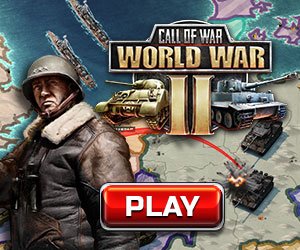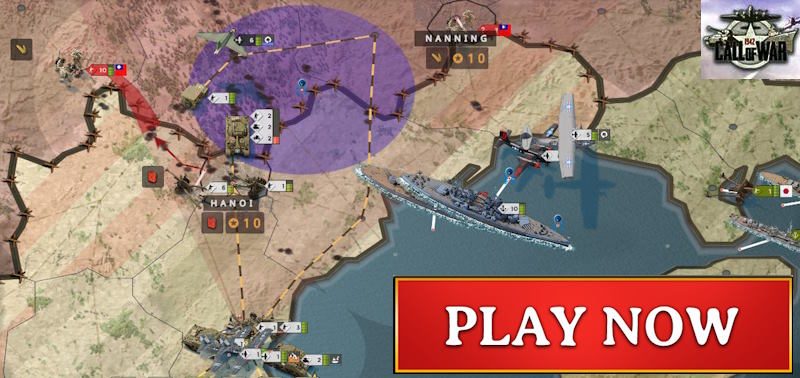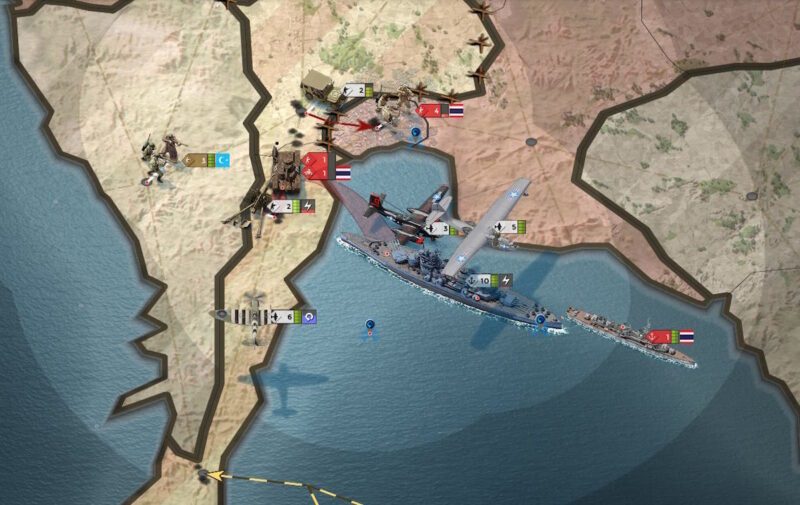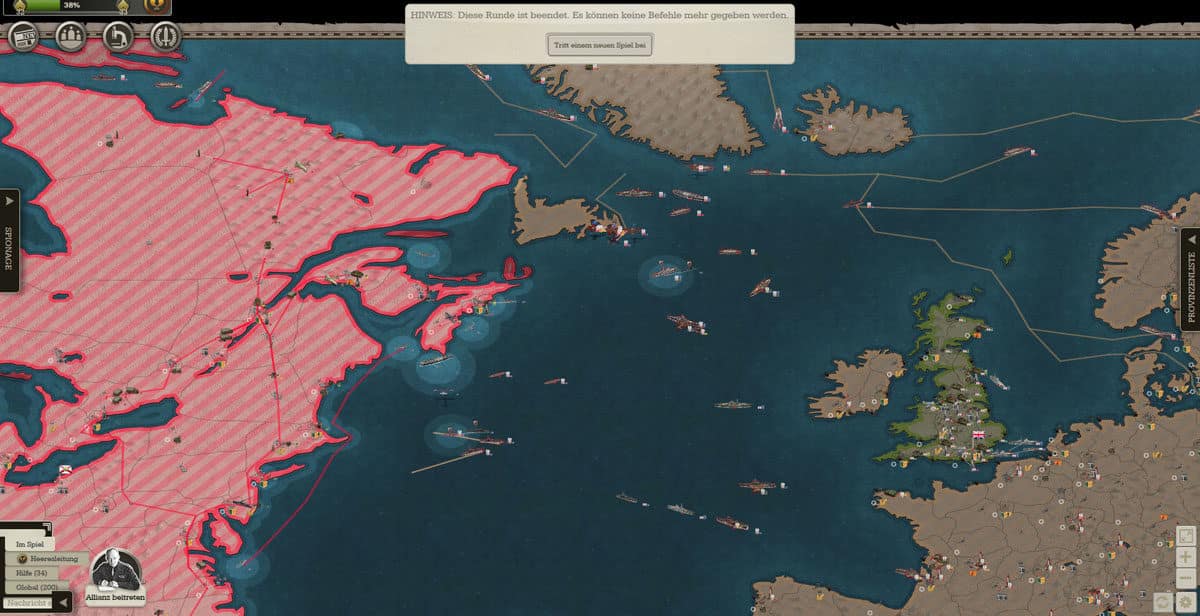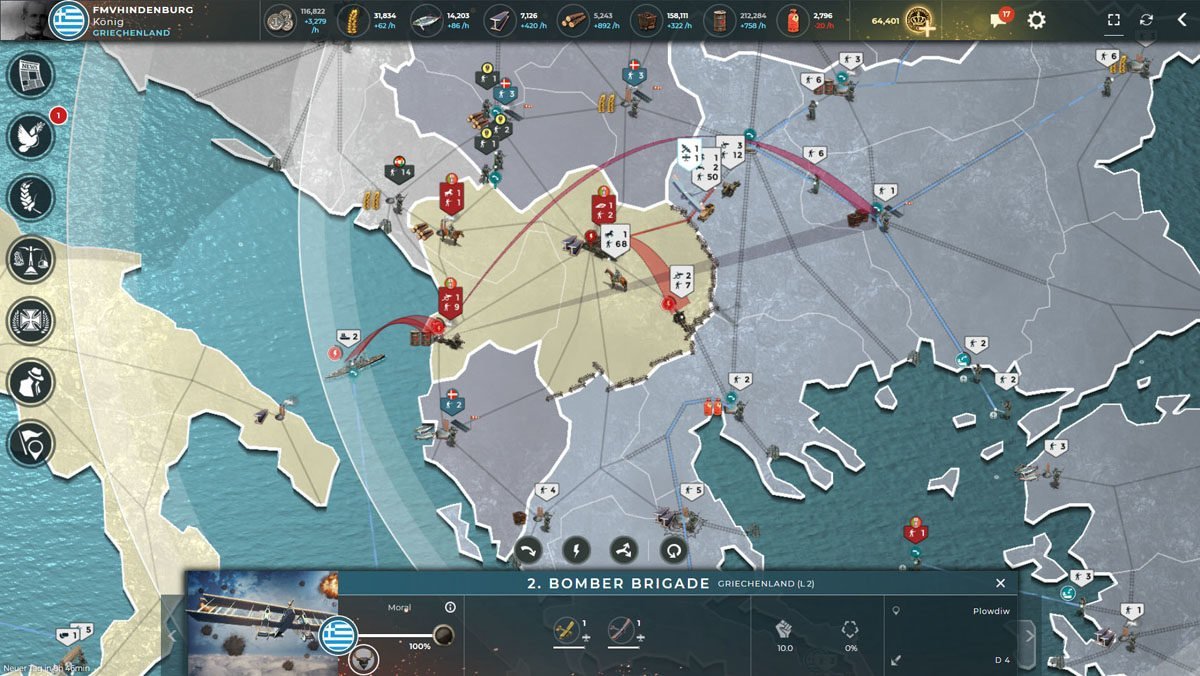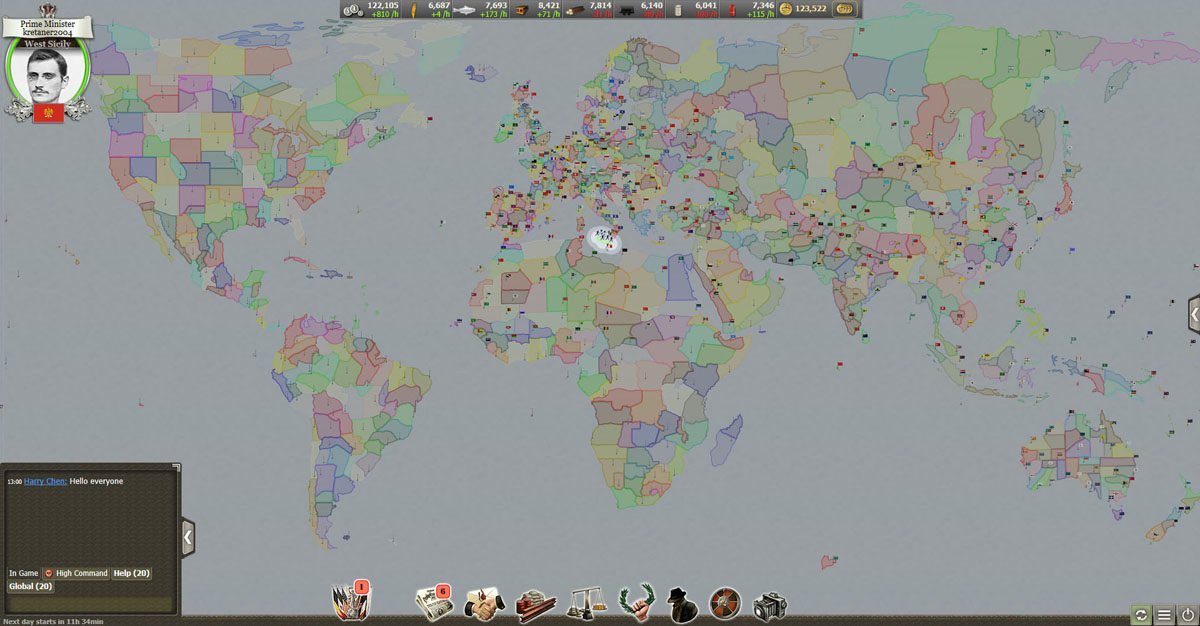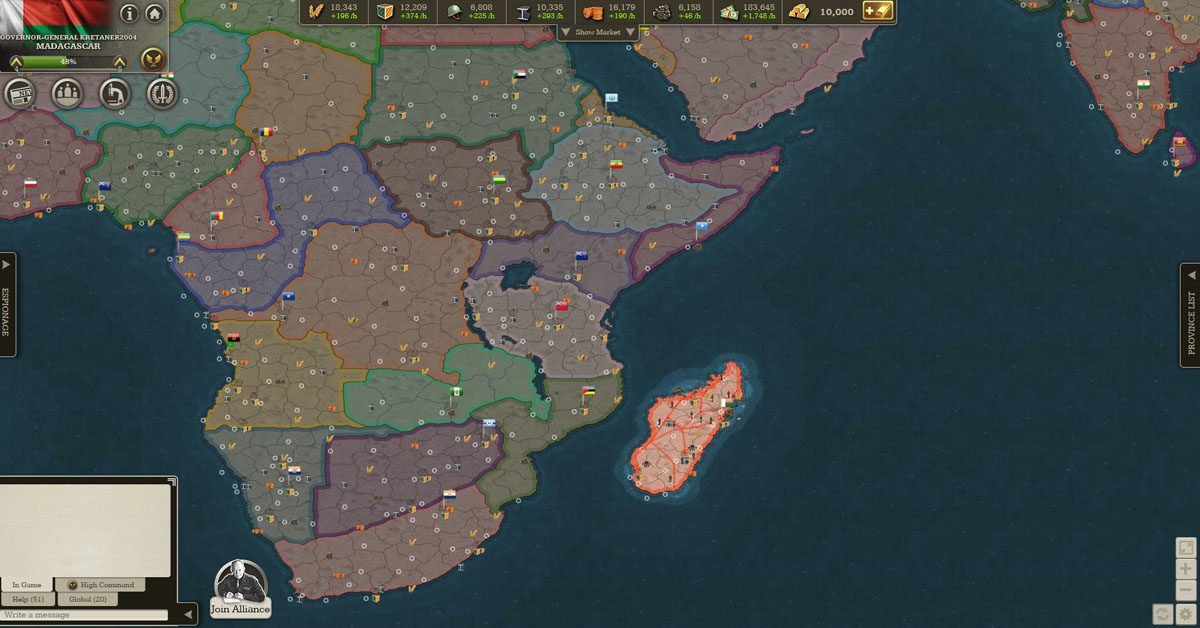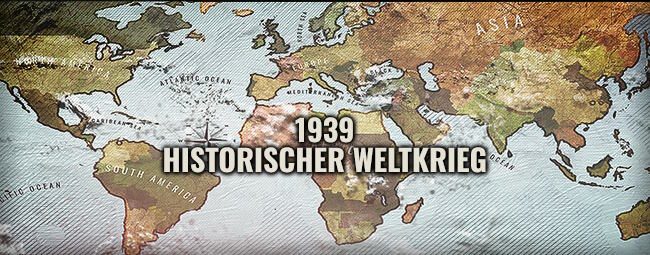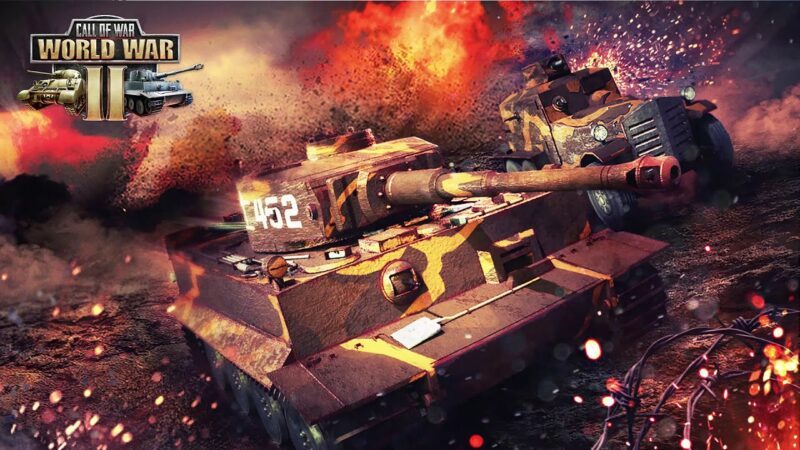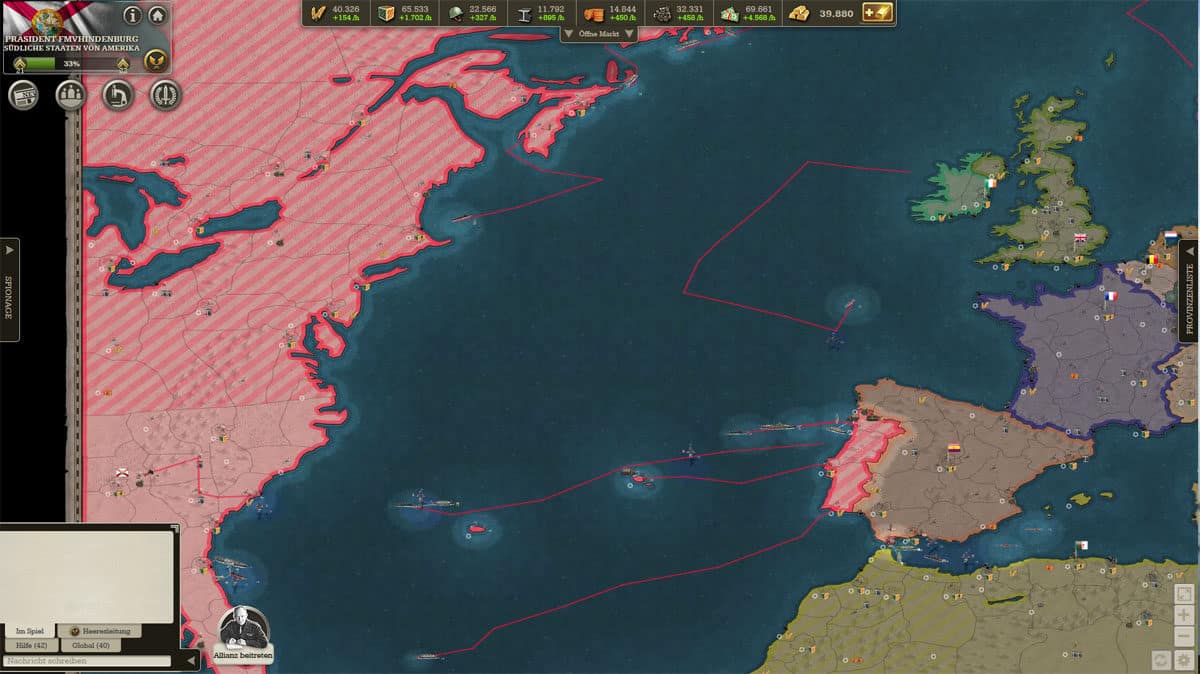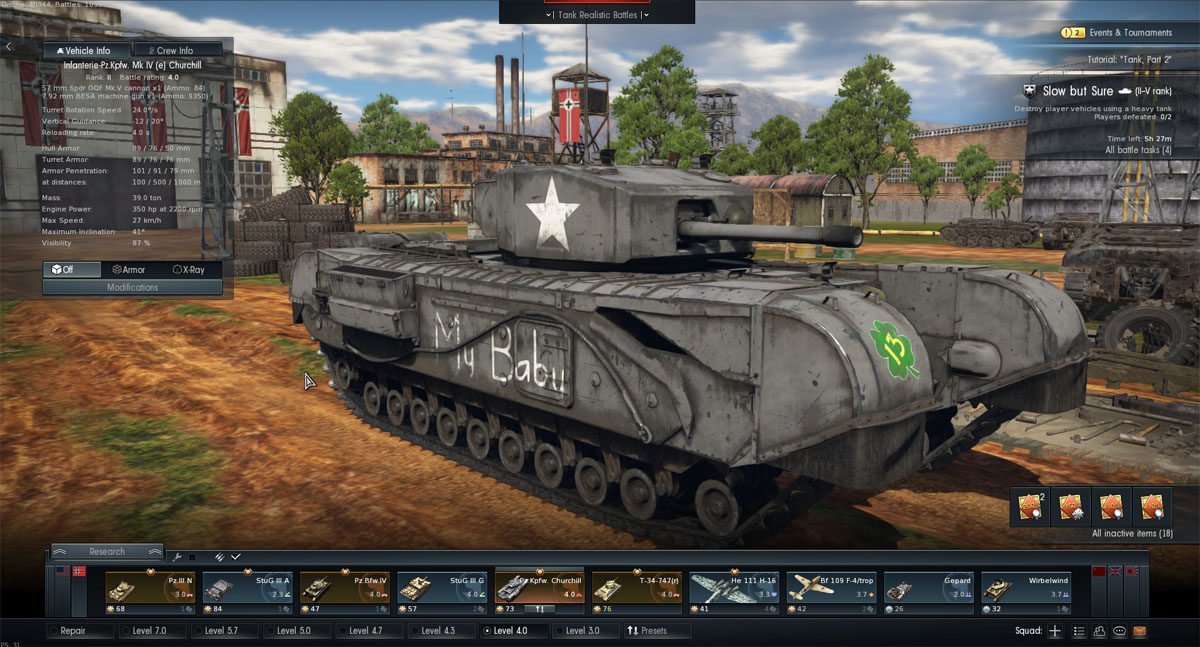With the mighty USA through a test game in the scenario ‘1939 – Historical World War’ in the free browser strategy game Call of War.
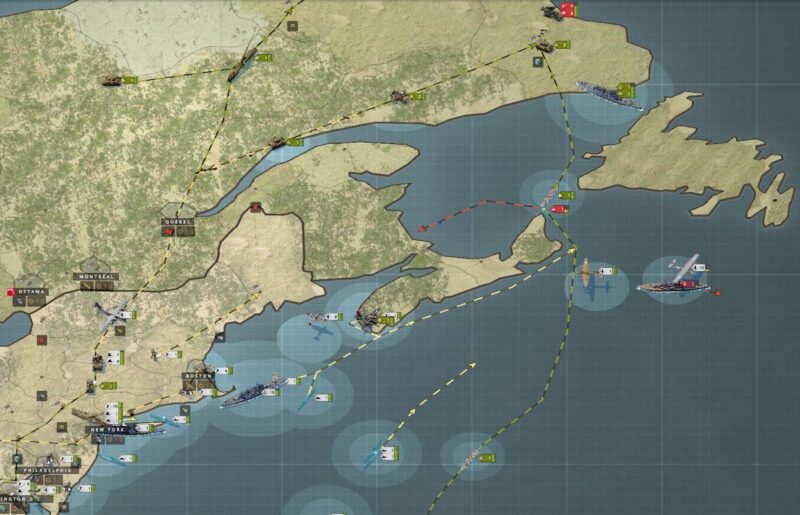
The app & browser strategy game Call of War
Table of Contents
Call of War is a popular real-time World War II strategy game that can be played directly in your web browser without requiring any downloads. In this game, players take control of one of the mighty nations during World War II and attempt to rewrite the course of history through strategic military and economic decisions.
The game features:
– Ground battles
– Naval battles
– Air combat
– Nuclear weapons
– Alliance formation
– Economic development
While primarily known as a browser game, Call of War is also available on multiple platforms including mobile devices and Steam. Many players prefer the browser version played through Google Chrome for the best experience.
The game is free to play and offers a multiplayer experience where you can compete against other players in conquering provinces, forming alliances, and building your economy to become a dominant world power.
As the U.S.A in Call of War
Video excerpts with highlights of the game with live gameplay with U.S.A.
After the successful test game Call of War with Australia, which was quite weak at the beginning, there was a lot of interest in trying out a stronger major power from the Second World War.
The USA is one of the most powerful nations in the ‘1939 – Historical World War’ scenario. Together with the Soviet Union, they have the most natural base resources in their core provinces at the start of the game and can dominate the North American continent. However, their military strength at the start of the game, especially at sea, does not correspond to the historical facts (the US Navy actually had the most warships in 1939 alongside the British Royal Navy), so you should approach it with a little caution to avoid being attacked by potential opponents who want to exploit this temporary moment of weakness.
In order not to repeat myself, I will not go into further details about the game mechanics of Call of War here, which the interested reader can read about in the article Call of War – Historical World War, and will start straight away with the course of the game.
Day 1 with the USA in Call of War
In order not to run the risk of being attacked by the strong British or Japanese fleets right at the start, I first contacted both nations to see if there was any interest in an alliance. Neither was seriously interested, but there was obviously no intention to attack either.
As the first eight to ten days were actually intended to be invested in expanding the core provinces rather than in armed forces in order to have as many resources as possible available for a strong armaments’ industry later on, my own attack capability was limited, and the fleet was to be assembled to protect the important American east coast.
For the USA, it naturally made sense to incorporate Canada in the north as early as possible, in order to exclude any danger from the northern flank and secure the resources there. The same applies as a second priority to Mexico in the south and the AI states in the Caribbean.
With limited military forces, however, this only makes sense if both players remain passive or even become inactive, as a costly conflict with high material consumption for armaments at this stage of the game would have a detrimental effect later on. However, as the players of both nations made contact with the USA and the Canadian in particular stood out as a very active player, the NAVO coalition was formed, consisting of the USA, Canada and Mexico. As a result, practically the entire American continent north of the equator was secured and the expansion of the economy could begin.
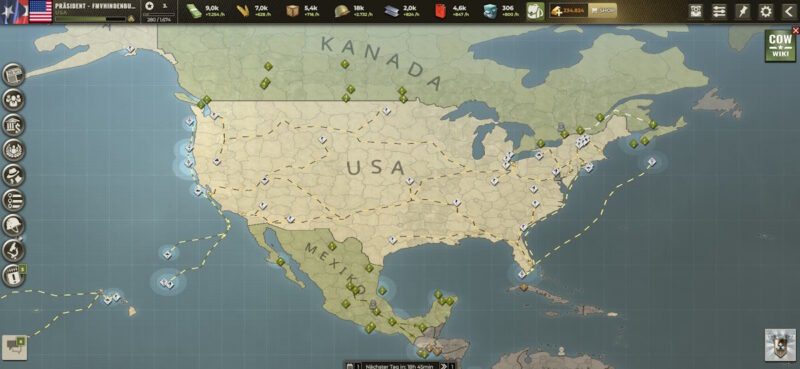
Day 2 with the USA in Call of War
Now that the rear was free, no troops were needed on either the northern or southern border, and so the invasion of the Caribbean began on Day 2. The first landing followed on Cuba.
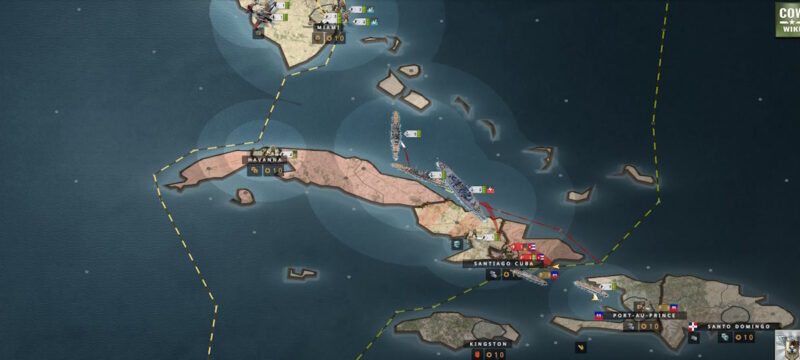
Day 3 with the USA in Call of War
Day 3 saw the occupation of Haiti and the Dominican Republic and preparations for the landing in South America, starting with Panama, Colombia and Venezuela.
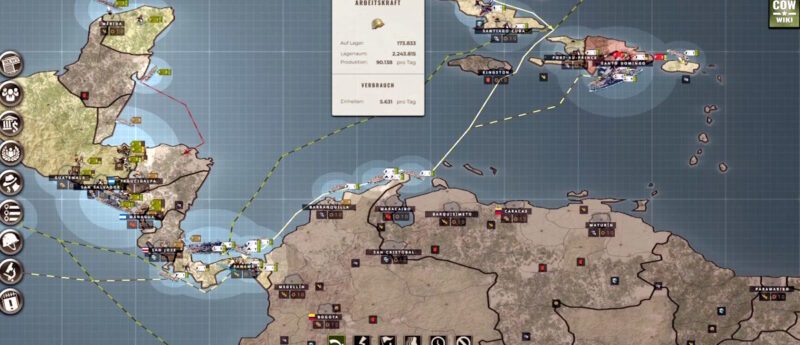
Day 4 and 5 with the USA in Call of War
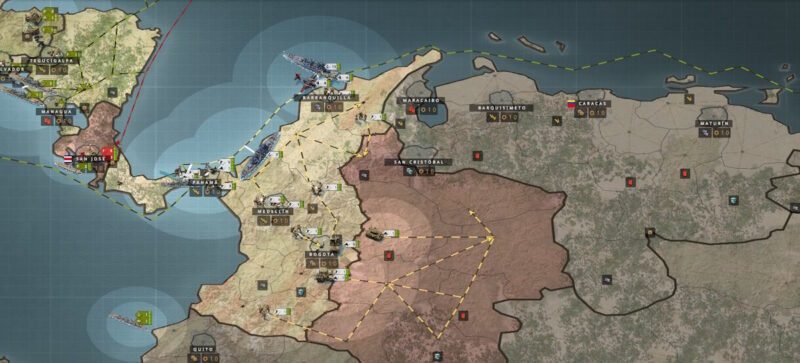
The attack on Colombia and then Venezuela, both led by the AI, went off without major problems, especially with the help of the united fleet, which had been merged in the meantime.
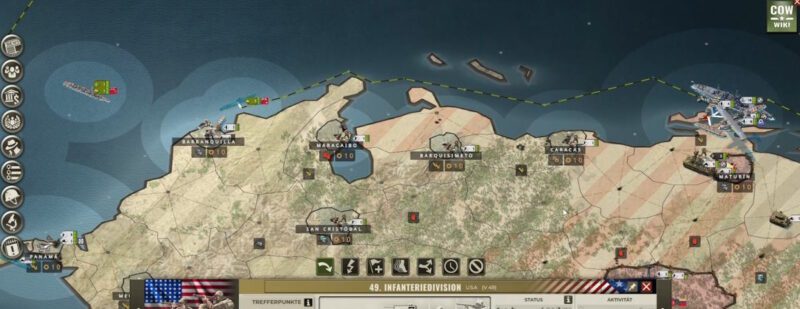
Day 6 with the USA in Call of War
After Colombia and Venezuela were occupied, the invasion of Ecuador and Peru was supposed to begin, which were either led by the AI or the player had become inactive. During the invasion, however, the Canadian ally interfered unasked and somewhat uncoordinated, so that the USA called off the attack and left the occupation of the western half of South America to the Canadians. Instead, it was decided to invade Brazil, which, given the size of the country’s territory and its existing armed forces, especially in the interior where the US fleet could not be deployed to support the land battles, became a tough and protracted affair. In addition, the Brazilian player put up a fierce fight and did not give up easily.
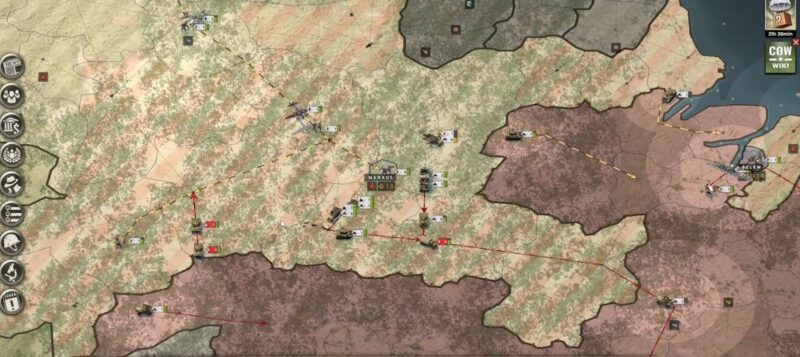
This made it all the easier for the US fleet to advance along the coast, as there was hardly any resistance and the defenders of the fortunately predominantly Brazilian coastal towns and the few warships were quickly shot up. The occupation of the liberated towns was then carried out by infantry that had landed.
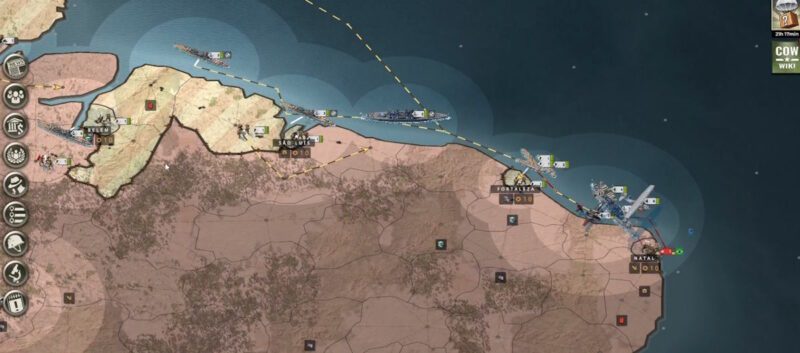
Day 7 with the USA in Call of War
The Japanese made contact, who were in a difficult situation in their war in China and were worried about an intervention by the Soviets and Indians, and therefore asked for support. However, as the US fleet had been consolidated in the Caribbean in the meantime and the possessions in the Pacific had been largely denuded, this required a longer preparation period.
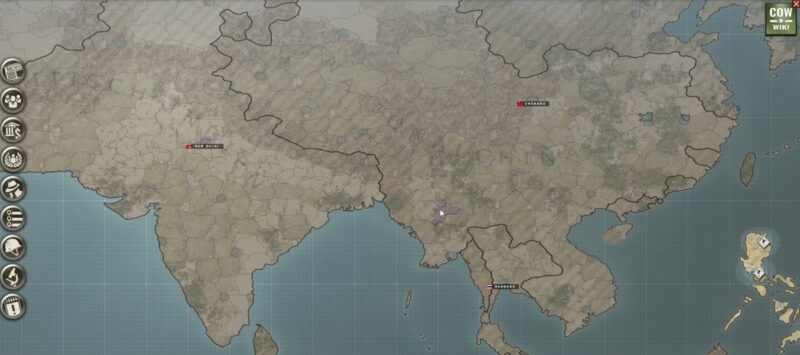
In the meantime, it had also become apparent that our Mexican in NAVO had fallen into agony and was no longer contributing much to the success of the coalition. Canada and the USA therefore decided to kick Mexico out of the alliance and occupy it shortly, in order to then take in Japan.
In the meantime, the conquest of Brazil was largely completed and the fall of the capital Rio de Janeiro was imminent. Obviously, the Brazilian player had also realized the hopelessness of his situation and had thrown in the towel.
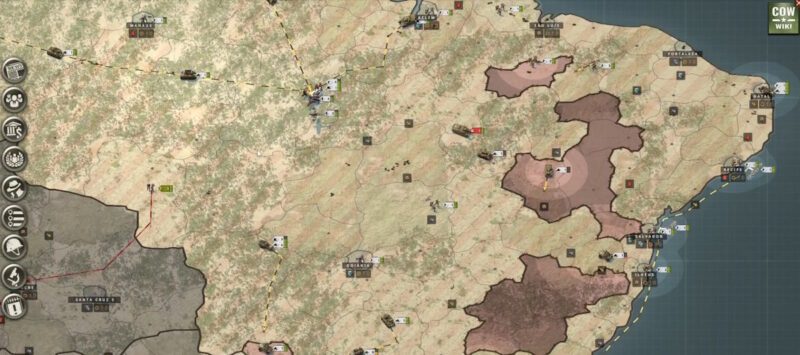
Day 8 with the USA in Call of War
In order to be able to shift the focus to the Pacific and West Africa as quickly as possible, where the competing alliance of the Soviet Union, British India and the already inactive German Empire (which was later replaced by China) began to make progress, the attack on the remaining states in South America was now launched. Paraguay and Uruguay were quickly occupied, Argentina did not put up much resistance either. Meanwhile, Canadian troops and warships were advancing south along the west coast of South America.
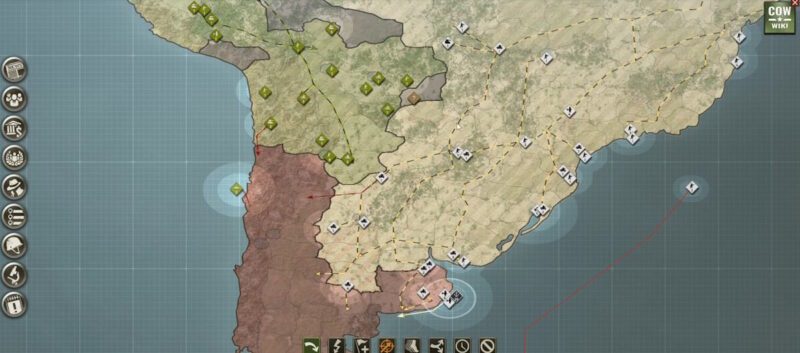
During this time, the Canadian also made his way to Ireland via Greenland and Iceland.
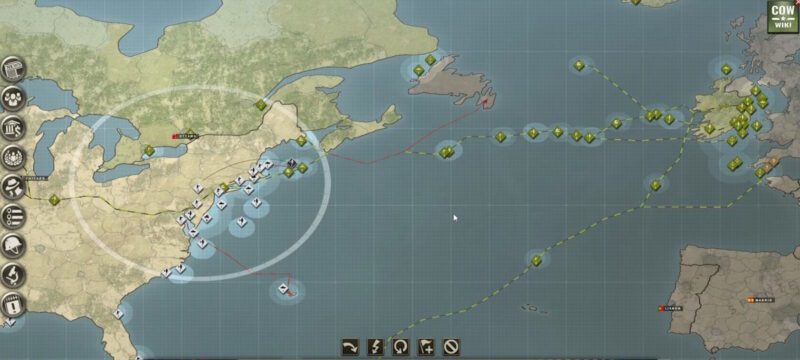
Day 9 with the USA in Call of War
A ‘Common Map’ had already been agreed with Japan before joining the coalition, so that the partners could see each other’s forces and reconnaissance results. Unfortunately, the Chinese began to put heavy pressure on the Japanese, even though the Japanese forces were actually stronger. Overstretched in warfare, Japan threw in the towel and signed over much of its resources to the US, but was now out as a prospective coalition member with a strong military force, economy and score.
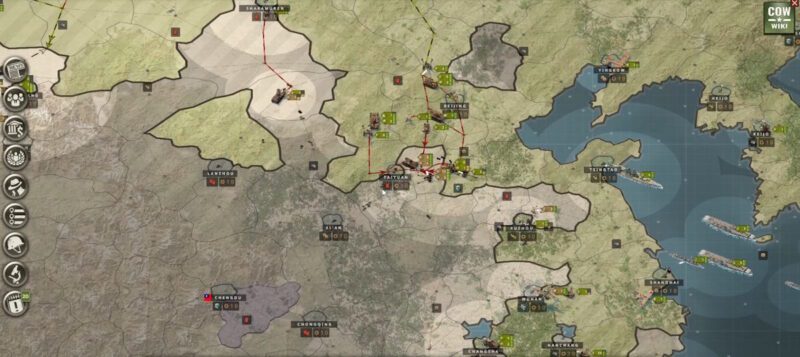
On this day, the occupation of Mexico, long prepared with a deployment and new troop recruitment in the USA, began – despite the failure of the Japanese – in order to leave no weak point for invasions by enemies on the American continent within critical range of the core provinces of the USA.
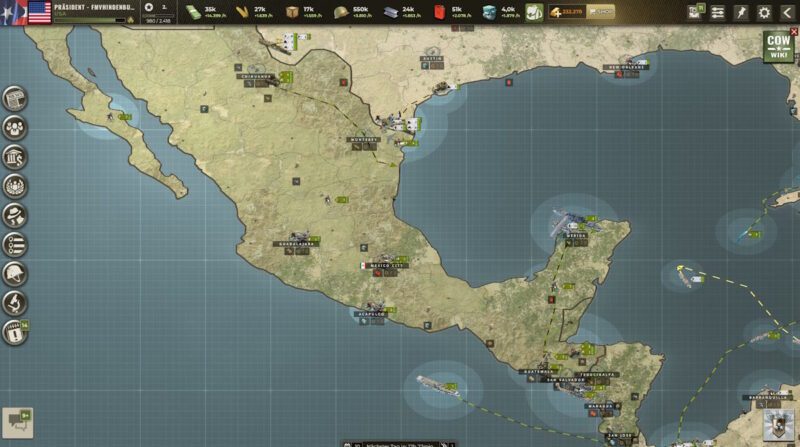
The invasion of Mexico is just beginning and the new enemy is now in shades of red and brown.
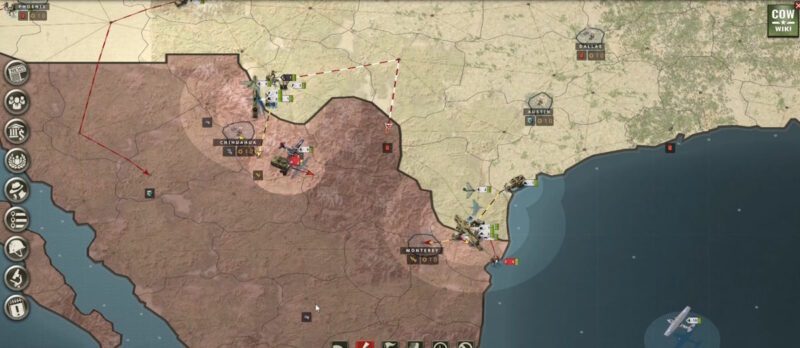
Day 10 with the USA in Call of War
While the Mexican troops were largely crushed, but much of the country still had to be occupied, the invasion of Liberia in West Africa was prepared with the troops freed up in South America.
Meanwhile, Canada had also taken control of the entire British Isles and landed in northern France, which had previously been conquered by the British.
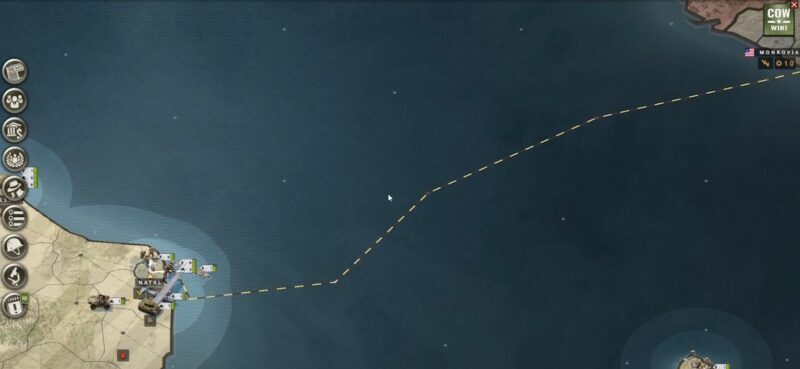
Day 11 with the USA in Call of War
The invasion of West Africa was successful with light losses. At the same time, however, India invaded Africa from the east via Egypt.
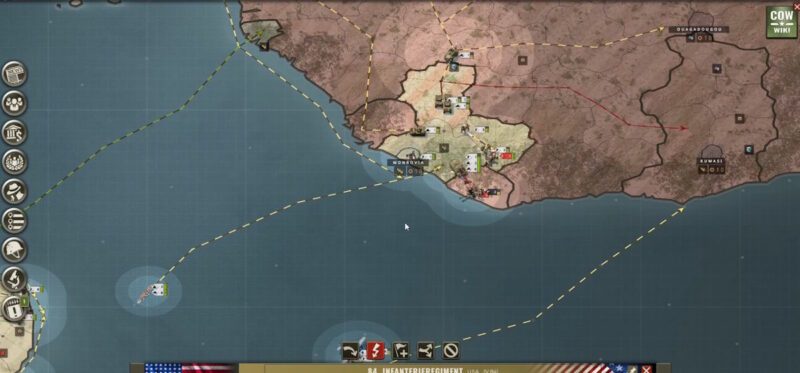
Coalition partner Canada had meanwhile also been able to occupy northern France, which had previously been conquered by the British, but for the first time had a border with the competing ‘Central Europe’ coalition. However, one of its members – the German Empire bordering to the east – had become inactive, while in the south the rest of France was also led by the AI.
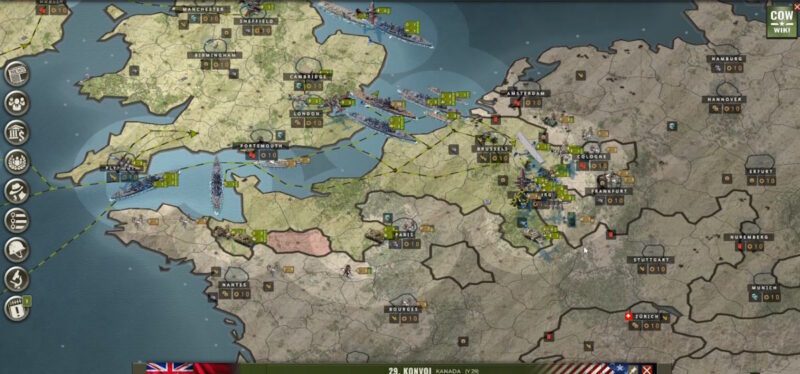
Day 12 with the USA in Call of War
During the night, the Indians sank a US troop convoy from Brazil to West Africa with submarines, making their position clear. At the same time, they quickly advanced from the east towards the advancing US troops, who were not yet prepared for an all-out war against a strong opponent.
AI-ruled Spain also declared war on the USA and Canada, which led to problems in northwest Africa and with the planned occupation of Gibraltar to seal off the Mediterranean.
In addition, the Soviets overran their previous coalition partner Germany, having thrown this inactive player out of their coalition and replaced it with National China. This meant that a powerful potential opponent from the same hostile coalition as India would soon be facing NAVO member Canada in north-western Europe.
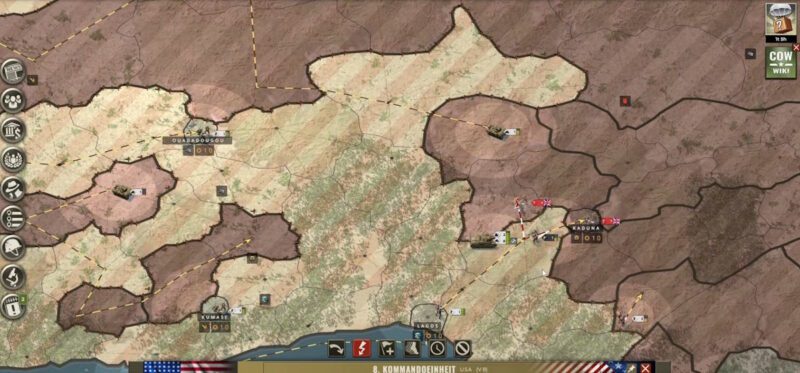
Day 13 with the USA in Call of War
India attacked the American ground forces, which did not have sufficient air defense, with massive tank formations, supported by numerous tactical bombers, which were protected by fighters. The attack could only be parried by bringing in rocket fighters by sea from Brazil, which were able to protect their own tactical bombers and reinforced ground troops, as well as by fire support on the coast from battleships.
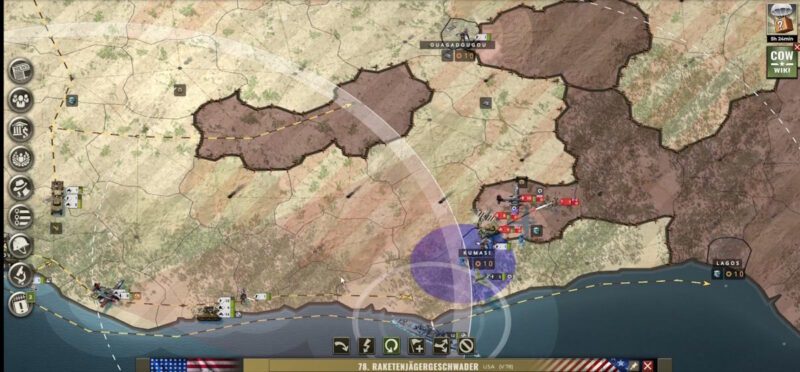
In Europe, the Canadian ally was faced with the approach of the Soviets, who had conquered Germany with their enormous troop strength and were now advancing into France.
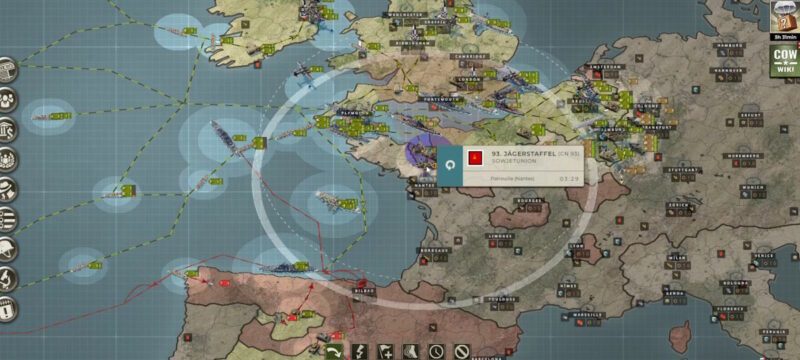
Day 14 with the USA in Call of War
Although the USA had just acquired its first atomic bombers, it seemed only a matter of time before the Soviets, with their huge superiority – especially their many battleships – would simply sweep away the Canadians in Europe and then have a clear path to North America, while the American forces would be largely tied down by the Indians in West Africa. In addition, the Italians, who did not actually belong to any alliance, appeared off the Caribbean heading west without their actual objective being clear.
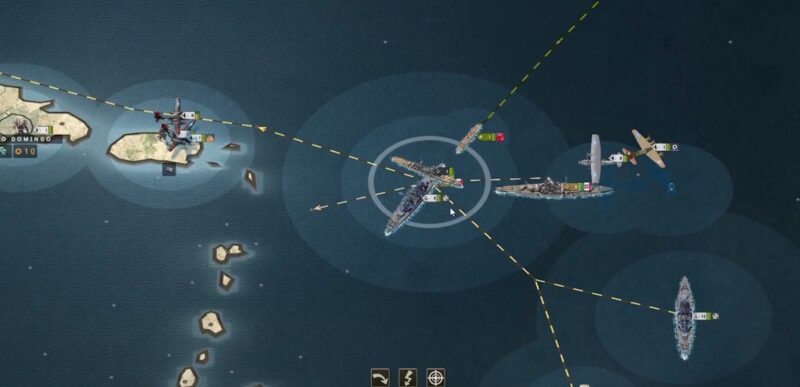
Therefore, West Africa had already been evacuated overnight by the American forces in a skillful and lossless operation and the troops freed up were deployed on the Brazilian coast to repel a possible invasion from Africa and the rest sent to North America, which in retrospect turned out to be the right decision.
Since it was not clear what the Italians’ objective was and the basic American policy was not to allow any nation other than members of its own alliance a bridgehead on the American continent anyway, all Italian naval units and landing troops heading for the Gulf of Mexico were attacked and sunk.
Day 15 with the USA in Call of War
In the meantime, the Philippines had been secretly expanded into a strong base in the Far East, from which Borneo was now occupied in order to be able to attack India unexpectedly from the east with nuclear bombers. This surprising action for the enemy was a complete success.
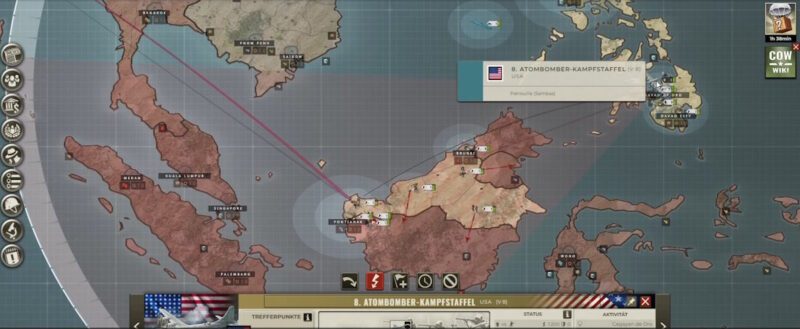
On the same day, another Italian invasion with heavy tanks took place in eastern Canada, heading for Quebec. This attack could only be repelled with the US help of the tactical bombers withdrawn from North Africa, an army of armored personnel carriers and self-propelled artillery and railroad guns, which were ready in the northeast of the USA for possible enemy landings.
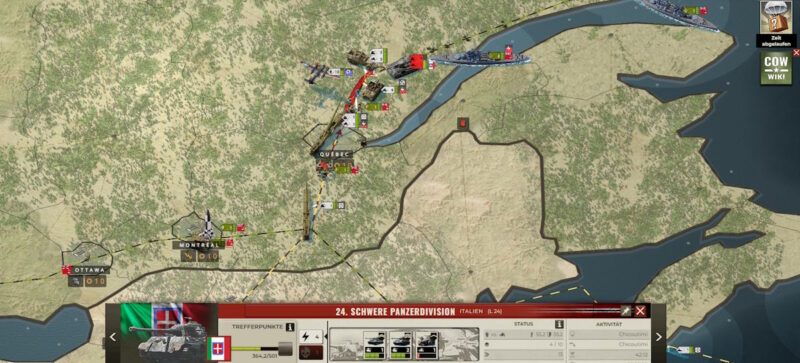
At the same time, a Soviet invasion attempt took place in western Canada, supported by a strong fleet of battleships, which could also only be crushed by US naval bombers. From now on, the USA was at war not only with British India but also with the Soviet Union and the militarily rather insignificant Italy.
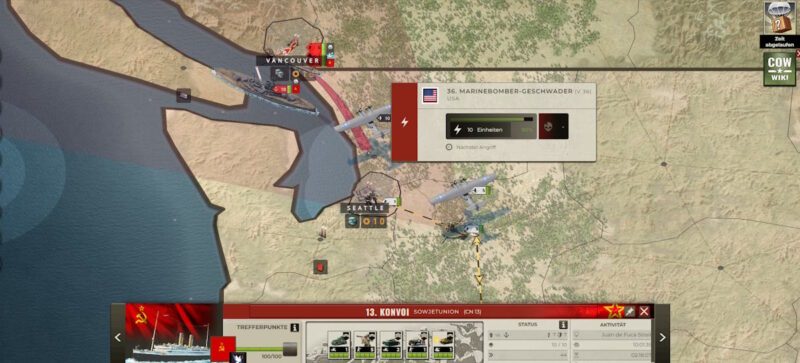
Day 16 with the USA in Call of War
After the coup with the nuclear strike on Calcutta, however, the enemy reactions were not long in coming: while a second nuclear bomber took off in the direction of Soviet Vladivostok and completely destroyed it, enemy aircraft attacked the Philippines, while US missiles were fired at their airfields on the Chinese mainland.
A short time later, a Soviet invasion fleet with naval support also appeared from the north.
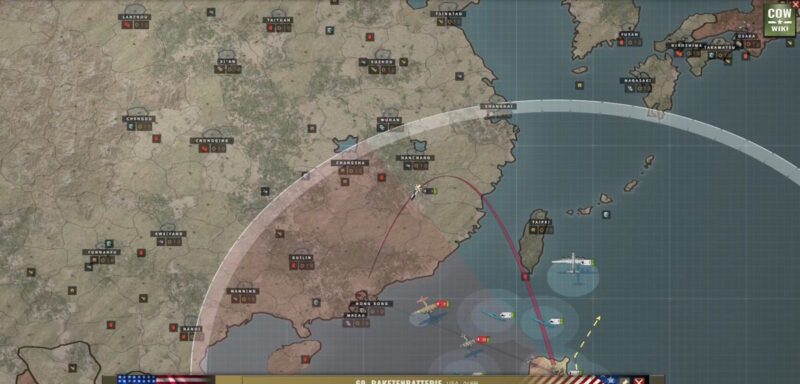
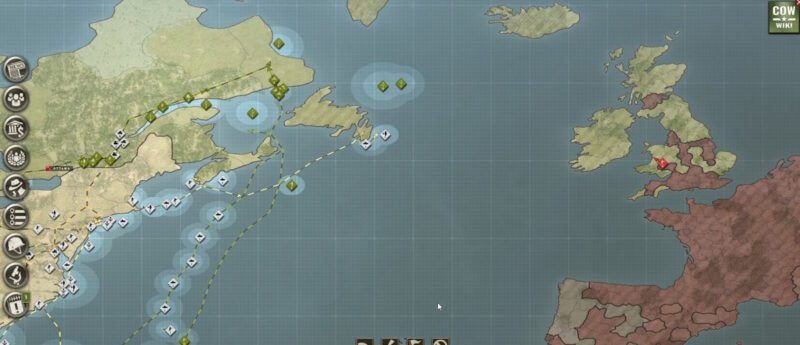
The first parts of the Soviet fleet also appeared south of Newfoundland, where the US fleets from the South Atlantic and Pacific were able to reinforce the North Atlantic fleet just in time to destroy this vanguard quite easily.
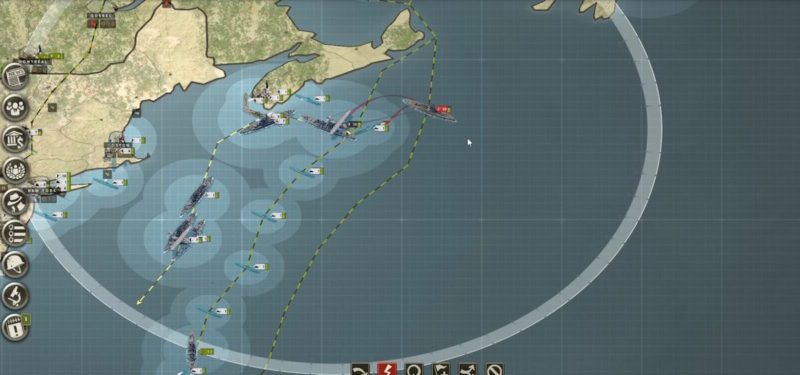
The last nuclear strike on a core province was on Soviet Alexandrovsk from islands in the Aleutian Islands south of Alaska, effectively taking out the Soviets’ last shipyard in the Pacific.
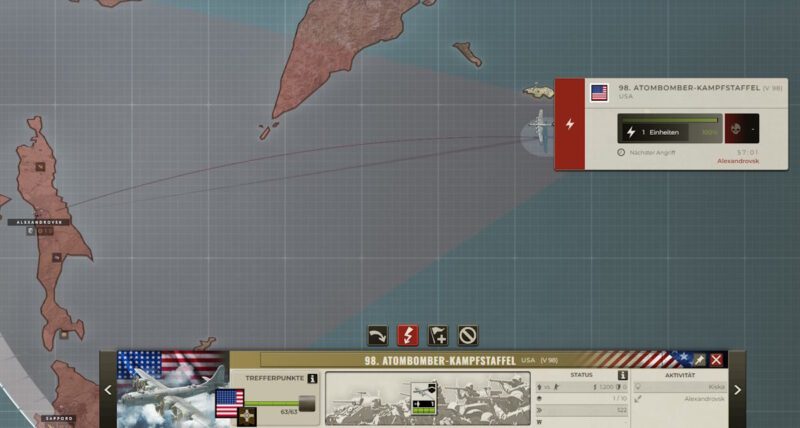
Day 17 with the USA in Call of War
On this day, there was a massive naval battle west of Newfoundland, which practically ended with the destruction of the deployed US fleet and the Soviet fleet as well as a large Indian submarine fleet. However, the enemy’s losses were significantly greater, with almost 50 battleships and ten submarines alone, and the remaining US naval bombers subsequently dominated the sea area. In addition, newly built warships were on their way to this region from the shipyards at the Gulf of Mexico and on the American east coast in order to re-establish the US presence.
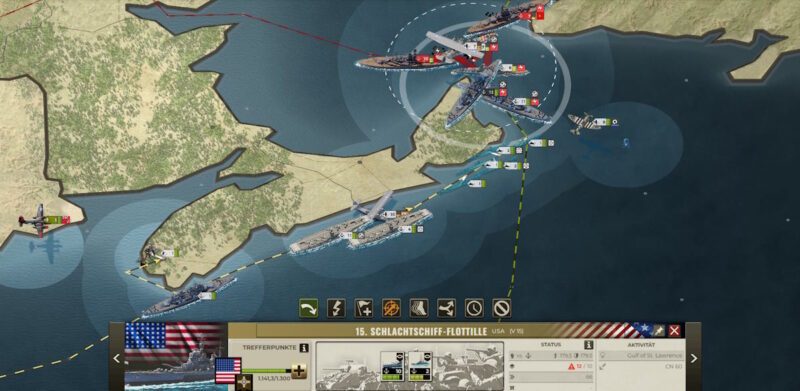
In addition to smaller Indian and Italian landings or attempted landings, which mainly took place on the South American coast and were quickly crushed, there was another invasion by the Soviets in northwest Canada. An attempted Soviet nuclear bomber attack on the USA also took place from there, but was aborted after the US rocket fighters were sighted.
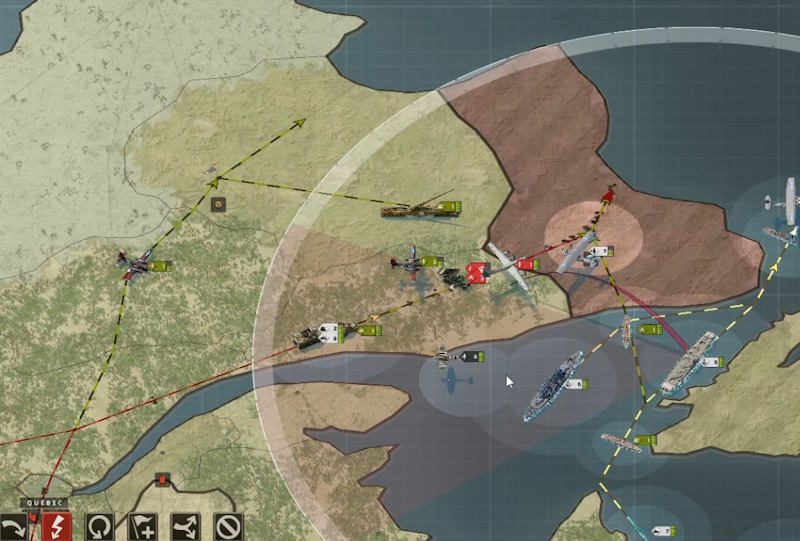
Meanwhile, a US nuclear bomber destroyed the large troop concentrations in Greenland, mainly from long-range guns.
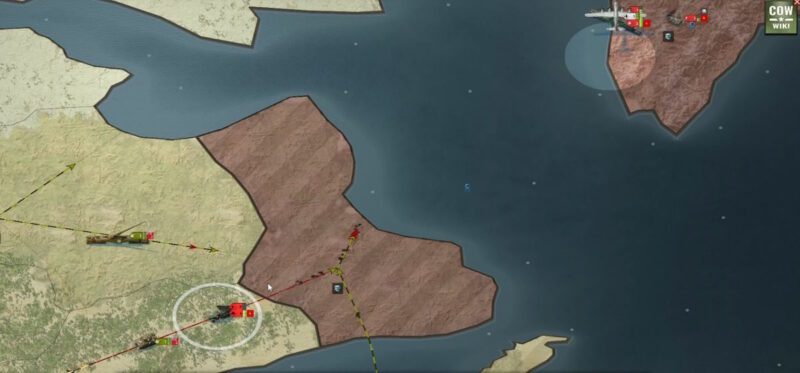
In addition, there was an insignificant and harmless landing at the western tip of Alaska and, after fierce resistance, the strong fortress of Manila in the Philippines fell.
Day 18 with the USA in Call of War
Since the overall victory by points (about 2/3 of the world’s victory point cities) could no longer be prevented by the enemy coalition – which had been foreseeable at the latest since the surrender of Japan – it was now only a matter of achieving the best possible final result from a defensive position.
Two Soviet atomic bombers – including the bomber that had previously escaped from North America – and numerous strategic bombers in Reykjavik, Iceland, were destroyed with the help of a US atomic bomber and aircraft carriers.
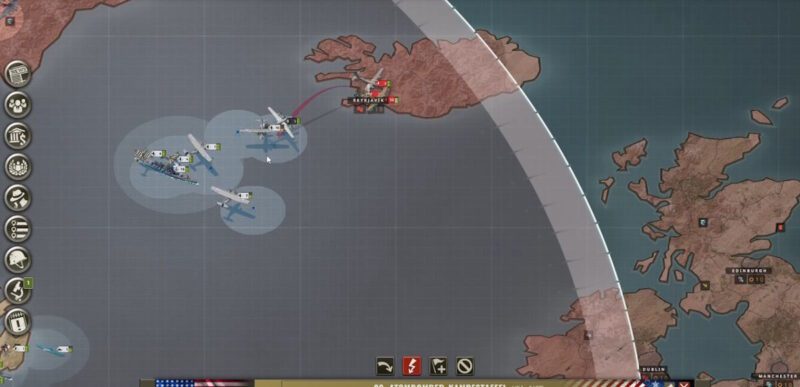
By neutralizing two to three Indian cities in Africa – two of them with nuclear bombers – and an invasion of New Guinea in the Pacific, second place was to be secured. Although Marrakesh and Lagos could be ‘atomatized’, the conventional attack on Monrovia and the landing on Timika in New Guinea due to a lack of further nuclear weapons, as well as some further attempts at insurrection with spies in Indian-occupied South Africa, were not completely successful, so that second place in this exciting and interesting game was narrowly missed.
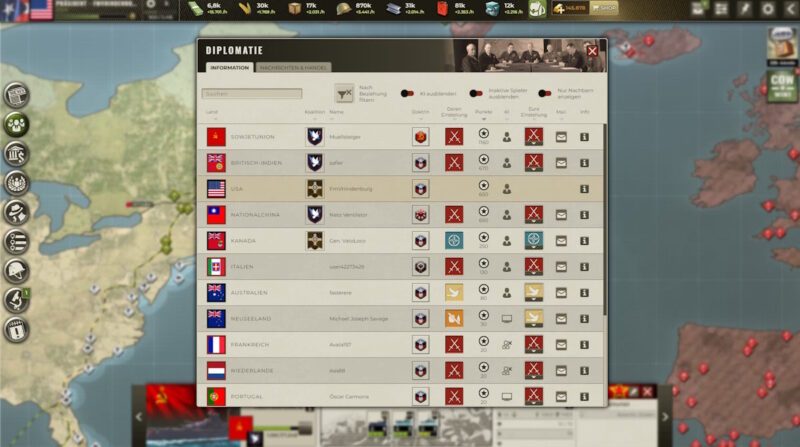
Due to the rather weak performance of the allies Mexico, Canada and Japan, it was unfortunately impossible to achieve more in this game.
You should therefore choose your allies carefully, and a look at their statistics in the diplomacy menu can help you do this. Under ‘Info->Service report’, you should use the previous successes as well as the lost and destroyed units and lost and conquered provinces as important evaluation factors for the player’s performance.
Try to Play Call of War here:



